Although it may be aimed at a slightly more mature audience, the PS Vita has a broad range of games to cater to every taste. From the adult-oriented thrills, spills and chills of school-based murder mystery Danganronpa, to creativity fuelled family friendly platformer Tearaway, the Vita has something for the young and more mature alike - although parents, understandably, may not want their child to have access to everything.
From helping prevent your child playing inappropriate games, to restricting online activity, the PS Vita comes with a range of parental controls designed to help keep your child safe online. This guide will take you through the settings one by one, explaining what they mean, and where you can find them, so you can be sure your child will have a safe, fun time with their Playstation Vita.
Before we get started
Setting up a child (sub) account
How to limit access to voice chat/text messaging on Playstation Vita
How to limit access to User Generated Media on Playstation Vita
How to set a monthly spending limit on Playstation Vita
How to upgrade a sub account to a master account
PS Vita Parental Controls
PS Vita Parental Controls - Intro
How to block access to the PS Vita's internet browser
How to block access to the Playstation Store on the PS Vita
How to require a password on making a purchase on the Playstation Store
How to turn off the Playstation Store's Automatic Funding Settings
How to block access to the email app on the Playstation Vita
How to prevent the PS Vita using location data
How to block access to inappropriate games on the PS Vita by age rating
How to limit the duration of play time on the PS Vita, and the days at which it can be played
How to change the Parental Controls passcode on the PS Vita
Setting up a child (sub) account
Unlike the PS3 and PS4, the Playstation Vita is a single account system. That means that only one person can have an account on that console at any one time - and once that account is associated with it, it's very hard to get rid of it. In fact, pretty much the only way to change the account on your PS Vita is to do a full format of your system. Unfortunately, this means it's almost impossible to have one console that multiple family members use, as some games will only let you have one save, and you'll also only have one collection of trophies (awards you unlock for performing certain in-game tasks).
With this in mind, when you first turn your PS Vita on, it'll ask you to put in your details - if you're a parent, you don't want to put your details in here. Instead, you want to log in with your child's sub account, which will let them have their own saves, trophies, and settings, and let you put a few more controls in place.
What is a sub account?
Essentially, there are two types of Playstation Network account - 'Master' and 'Sub' accounts. Unless specifically set up as a sub account, all accounts are master ones by default. However, by using your Master account, you can create a number of sub accounts for your children, over which you can take control of a number of settings.
In order to make a sub account, you'll need to have a master account of your own on the Playstation Network, linked to your own email address, regardless of whether you plan on playing any games yourself. If you've ever gone online on the PS4 or PS3, chances are you have a master account already.
Assuming you have an account already, first, head over to the following website on your PC and sign into your Playstation Network account: https://account.sonyentertainmentnetwork.com/liquid/login.action
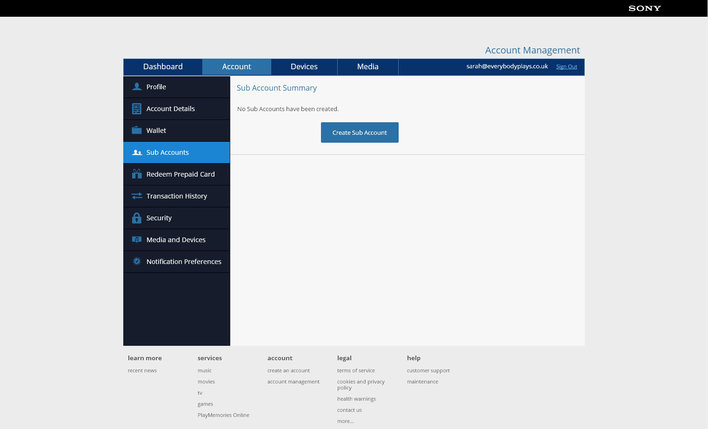
From there, click on the 'Account' tab in the navigation bar at the top, and find the 'Sub Accounts' option in the list on the left hand side. Click on it, after which you'll be taken to the 'Create a New Sub Account' page.
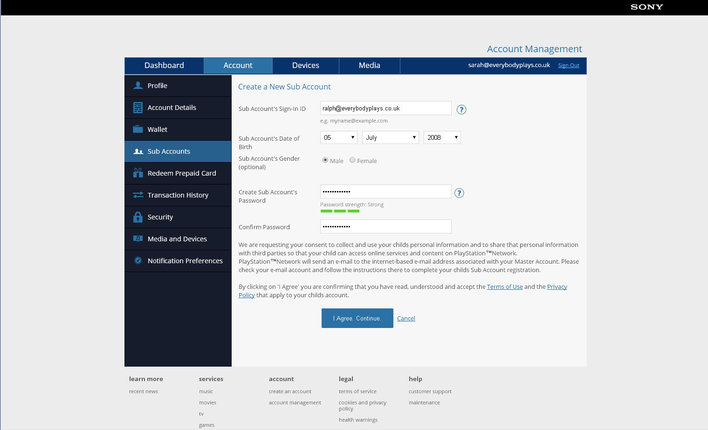
Here, you'll be asked to fill in a number of fields to set up your child's sub account. Asking you to enter a date of birth, a password, optionally choose a gender, and, most importantly, register an email address for the account, it's important to note that your child doesn't actually have to have access to the email in question, as they'll be able to use their PS Vita perfectly well, without ever having to enter their email address and password. Once everything is entered, click on the big 'I Agree, Continue' button at the bottom of the screen.
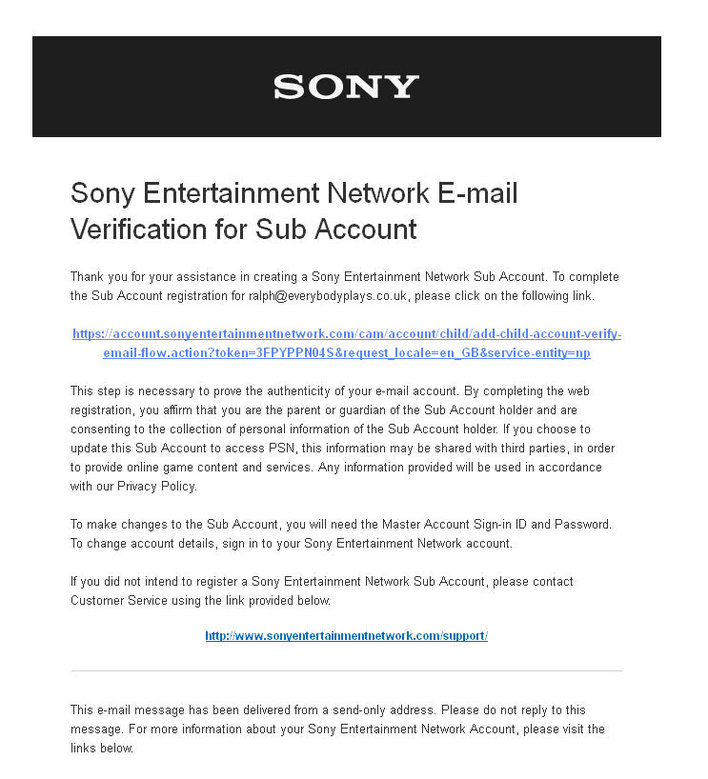
Sony will then send you an email with a verification link in - simply log into your kid's email account, in our case young Ralphy's, and click on the big link included to tell them that yes, this is a genuine email address.
The final step of the set-up process lets you set up a handful of different parental controls for the account, as follows - and these apply across all Playstation formats:
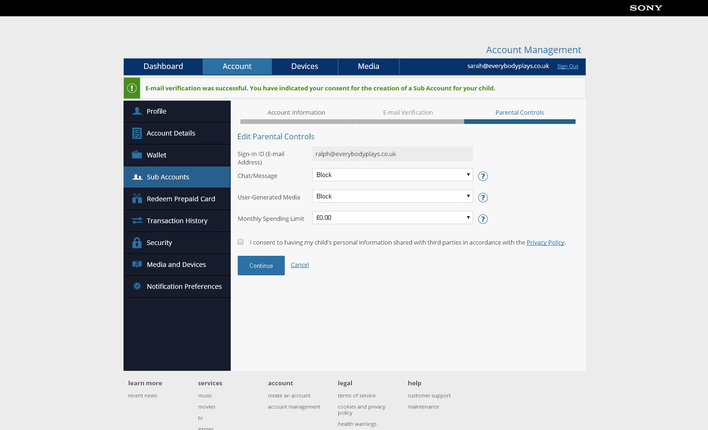
How to limit access to voice chat/text messaging on Playstation Vita
Found under: https://account.sonyentertainmentnetwork.com/ -> Account -> Sub Accounts -> Parental Controls
As the Playstation Vita allows you to play certain games online, you may occasionally be sent messages by other players. As these messages aren't vetted, there's no telling what they might say - and people can also attach pictures freely, too, adding an extra layer of uncertainty. This setting lets you choose whether to allow or block any text, voice and video chat for the account in question. Unfortunately, there's no facets here - you can't restrict messaging to only friends, for example - instead, it's either on or off.
How to limit access to User Generated Media on Playstation Vita
Found under: https://account.sonyentertainmentnetwork.com/ -> Account -> Sub Accounts -> Parental Controls
This is a setting we imagine mostly applies to the Playstation 4. While you can take screenshots on the PS Vita, there's no easy or obvious way to share them around the console. While you can attach pictures to messages, it's not just game-related screenshots you can attach (and arguably, the game-related screenshots are likely to be less risky), so if your child's only playing on the Playstation Vita, there's little reason to switch this to block.
How to set a monthly spending limit on Playstation Vita
Found under: https://account.sonyentertainmentnetwork.com/ -> Account -> Sub Accounts -> Parental Controls
The Playstation Vita has access to the Playstation Store, where you can buy digital copies of games, rent or purchase films, and buy add-ons for games you already own. One of the more powerful ways you can control what a sub account can do, this setting lets you set a limit on the amount of money the sub account can spend each calendar month. However, it's a little bit more complex than that.
For security's sake, a sub account can't have a credit card associated with it, so when it tries to make a purchase, the money will have to come from one of two places. The first, and in our mind, best way is to add money to the sub account using Playstation Network credit vouchers, bought from a shop or online. The second, and slightly more lax way is that the sub account can spend any money in the wallet of its associated master account. This is a bit more tricky to get your head around. In practice, what this means is that if your child wants to buy something, you'd have to go to your account, add money to your digital wallet, and then your child would be able to spend a portion of it on what they want. Either way, this setting lets you set an absolute top limit on how much your child can spend online each month - although again, this applies across all Playstation formats.
How to upgrade a sub account to a master account
When said child reaches the big 18, they can then choose to upgrade their Sub account to a Master one all their own, by logging into the same Sony Entertainment Network area as before - using the email address and password of their own account - and choosing the 'Upgrade Your Account' button and following the instructions.
How to set up the PS Vita's Parental Controls
To set up the rest of the PS Vita's Parental Controls, you'll have to head onto the console itself. On the main menu (accessible via the PS button from any application), you'll find a Parental Controls icon - it looks a bit like a green shield with two smiley faces.
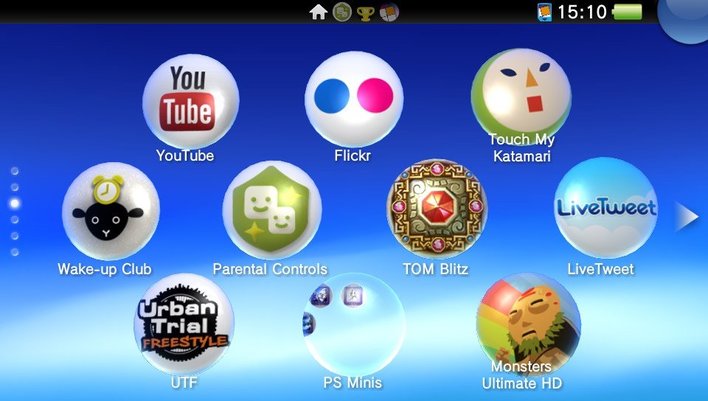
Touch the icon to bring up the application's "live screen" area, and press the icon labelled "Start" to open the Parental Controls. You'll then be prompted to enter a four digit passcode for parental controls - this is actually asking you to set up a passcode, so only you will be able to tweak these setting in future. Once you've chosen a passcode, you'll be asked to enter it a second time to confirm, and the application will launches.
In the Parental Controls app, you have three main options - Features, Games and Play Duration. We'll run through them all one by one, starting with features.
How to block access to the PS Vita's internet browser
Found under: Parental Controls -> Features
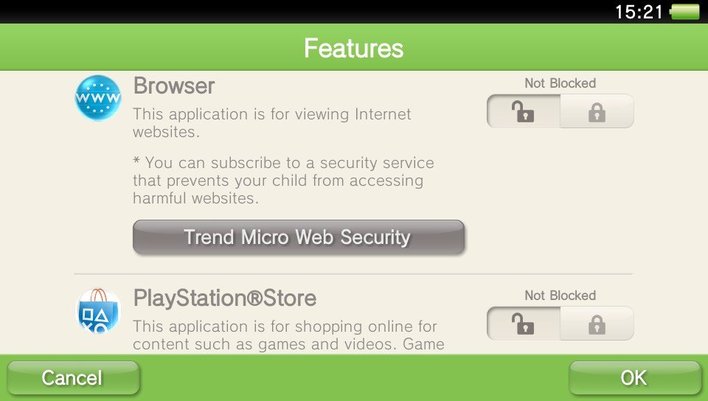
Like many consoles, the PS Vita has a built in internet browser, handy for looking up walkthroughs, hints and tips for the games you're playing. Of course, it's also possible to access many other, potentially unsavoury, sites too, so you may prefer to block it all together, and keep your kiddie's browsing to the PC, where you can keep a closer eye on what they're doing. To block access to the web browser altogether, simply touch the padlock icon, so it turns green.
For a more nuanced approach, you can take out a subscription ($19.99) for a Trend Micro configurable web filter especially for the PS Vita, which is accessible via the big grey 'Trend Micro Web Security' button. You can find a handy FAQ on how this all works here.
How to block access to the Playstation Store on the PS Vita
Found under: Parental Controls -> Features
As mentioned earlier, the Playstation Store is a virtual shop where you can buy extras for your existing games, or purchase new ones, as well as download free game demos, add-ons and trailers. If you've set your PS Vita up with your child using a sub account, you won't have to worry about them racking up a huge bill on your behalf, as they can't have a credit card associated with their account, and they can only spend money that's already sitting in your virtual wallet on your master account (although even this depends on how high you've set their monthly spending limit). With this in mind, if your other parental controls are set up properly, we can see little reason to block access to the Playstation Store altogether - but if you ever feel the need, this is where you'll find the setting.
How to require a password on making a purchase on the Playstation Store
Found under: Playstation Store -> '...' -> Transaction Management -> Security
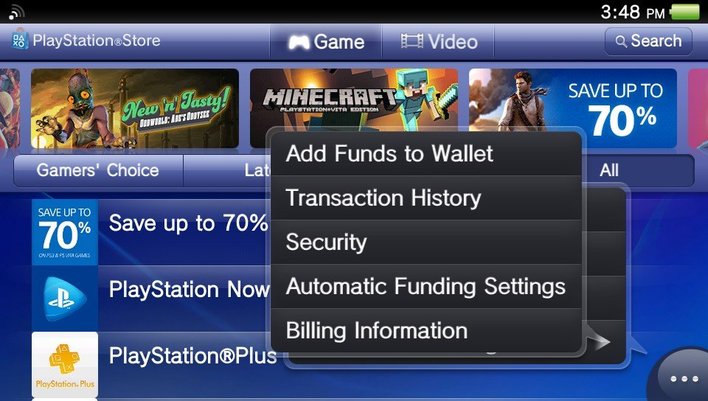
Whether your child has a sub account or not, there are ways you can take control over what they buy on the Playstation Store, without having to block access altogether. This way they can maintain access to free demos and add-ons, yet you'll always have a say over what they download. In the Playstation Store's security menu, you'll first be prompted to enter the password associated with your Playstation account. From there, you can tick a box to require that same password to have to be entered every time your child tries to buy some items in the store - and if you've set up their account so they don't know their password, you now effectively have full control over what they can and can't buy.
How to turn off the Playstation Store's Automatic Funding Settings
Found under: Playstation Store -> '...' -> Transaction Management -> Automatic Funding Settings
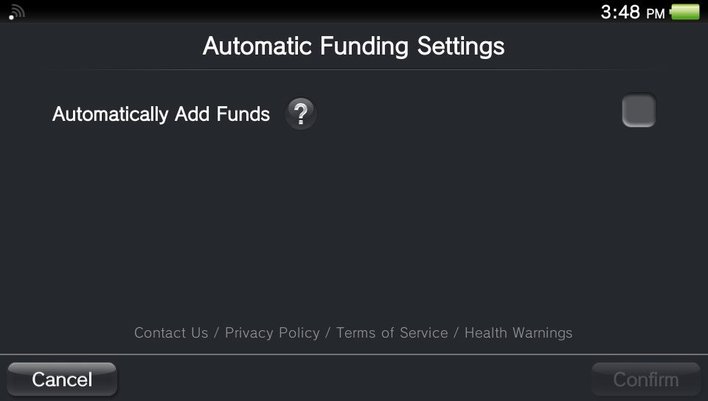
Another handy setting on the Playstation Store is the tick box for 'Automatic Funding Settings', which is something you'll most definitely want to turn off. If your child has a master account with a credit card assigned to it, this setting essentially authorises Sony to automatically bill your credit card whenever you run out of money in your wallet and try to make a purchase, without having to check with you first - a sure fire route to disaster in the hands of a shop-happy youngster. If you have a sub account, you don't need to worry - but for those who've set up the Vita on a master account, turn this off the first chance you get.
How to block access to the email app on the Playstation Vita
Found under: Parental Controls -> Features
Doing exactly what it says on the tin, the PS Vita's built in email app lets you link an email account of your choosing to your Playstation Vita, letting you check your email while on the go. If your child already has an email account, we don't see there's much reason to disable this, as having access to the same account, just through the PS Vita, doesn't explicitly bring with it any extra risks - although it does let them potentially email others in a little bit more privacy. Either way, here, you can either allow or block access to the mail app altogether.
How to prevent the PS Vita using location data
Found under: Parental Controls -> Features
This is a bit of a weird one. Various PS Vita games and applications use information from Wi-Fi access points (and, depending on your model of PS Vita, sometimes GPS) to obtain data on your location in order to make your games better. An example of the sort of thing we're talking about is Vita racing game ModNation Racers: Road Trip, which has what's called a "localised" leaderboard. When you post a lap time to the game's leaderboards, it'll make a note of where you posted it from, and will then find other, local times that other players have set nearby, for you to see how you compare - and challenge if you want to beat them. The description here warns that leaving this enabled may mean that people could find out the location of your child, and while we have yet to see a game that shares your location data with quite that precision, for peace of mind, it may be better to turn this off, even if it may prevent certain modes of certain games from working properly.
How to block access to inappropriate games on the PS Vita by age rating
Found under: Parental Controls -> Games

In this section, you can restrict the games (and any downloaded videos) your child can access on the PS Vita, based on a somewhat obscure level system that in turn ties in with the PEGI age ratings (or, in America, ESRB) you find on game boxes. There's a total of 11 levels on offer, but, somewhat confusingly, the official Sony descriptions disagree on what each of the levels mean, and what age rating of games they'll allow you access to. Each level also says what age it's meant to be for - "Age 15 or older", for example - although equally confusingly, at level 7, which the system assures is for 15 years and older, the system will allow access to PEGI 16 games. For more about what this means in practice, check out our illustrated guide to PEGI and video game age ratings.
In honesty, the easiest thing to do here is to simply slide the pointer from right to left, until the PEGI ratings you don't want your child to have access to have disappeared from the bottom of the screen. That way you don't have to worry about getting your head around Sony's level system, and you can be sure your PS Vita is safe and secure.
How to limit the duration of play time on the PS Vita, and the days on which it can be played
Found under: Parental Controls -> Play Duration
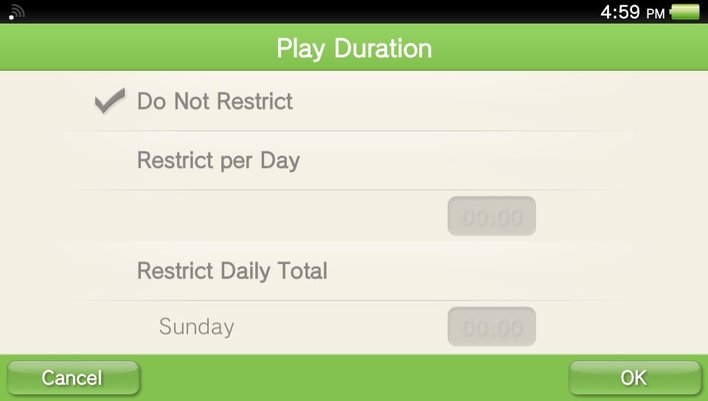
In this menu you can set a variety of restrictions on when, and for how long, your kids can use their console. Unfortunately, there's no way of setting on and off times to stop them sneaking it up to bed with it, but you can set a maximum number of hours they can use it for, either as the same figure every day under "Restrict per Day", or by setting individual restrictions for each day of the week under "Restrict Daily Total". The latter would be particularly useful if you want to allow them extra game-playing time on weekends, for example. Of course, the "Do Not Restrict" option lets them use the console freely, without any restrictions, while the "Change for Today" option at the bottom of the screen lets you temporarily override the restrictions you do have in place for the duration of the day - particularly useful as a birthday treat, or if you've got a sick kid!
How to change the Parental Controls passcode on the PS Vita
Found under: Parental Controls -> Change Passcode
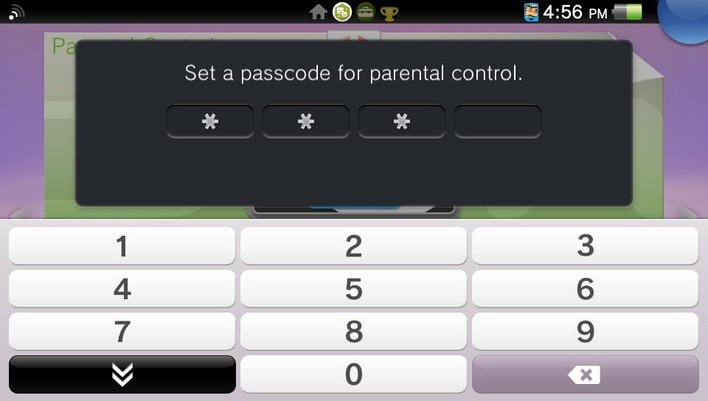
A fairly self explanatory option, this handy setting lets you change your Passcode for the PS Vita's Parental Controls app, which you'll need to enter every time you start up the program. Should your details be compromised, this is what you'll want to change.
---
And that's your lot! If you've followed these instructions, your PS Vita is now safe, secure, and ready for your kids to have fun with. If you have any questions, please feel free to leave a comment in the section below, and we'll do our best to answer it!












